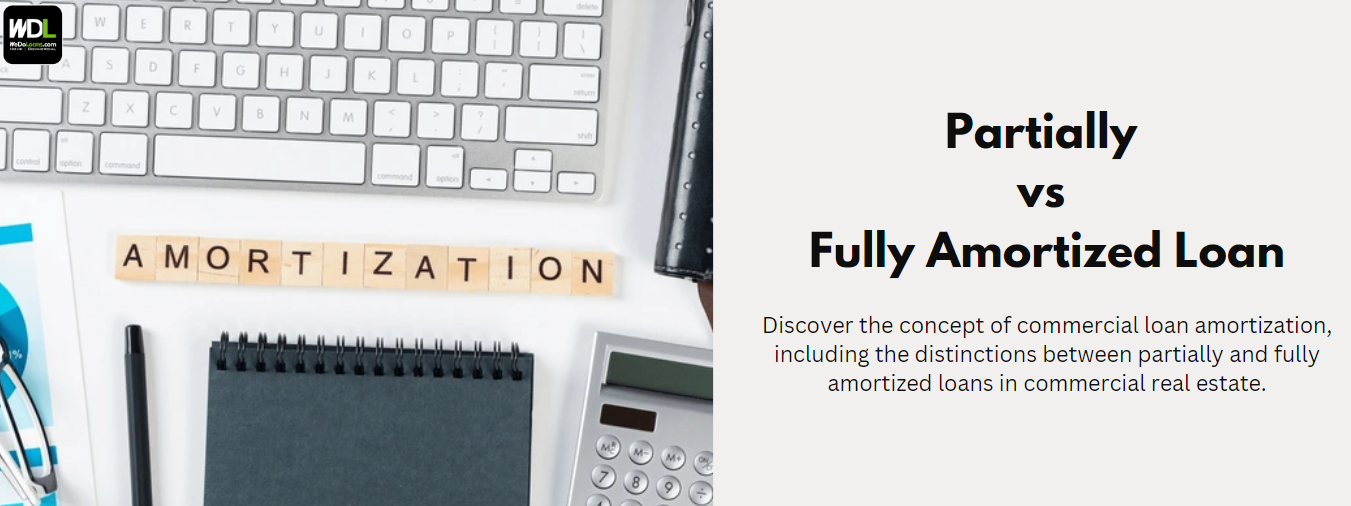
A partially amortizing loan is a common choice among commercial real estate investors due to its advantageous features. All loans involve some form of amortization, regardless of whether they are commercial or otherwise. The primary distinctions lie in fully amortizing and partially amortizing loans. Understanding these differences is crucial for investors to make informed decisions aligned with their specific needs.
What is Amortization on a Commercial Loan?
Amortization refers to how borrowers repay borrowed amounts over time. In all loans, borrowers agree to make periodic payments or installments until the borrowed amount is fully paid off.
For instance, a fully amortized loan with a fixed interest rate over 10 years entails 120 equal monthly installments. Initially, a larger portion of each payment covers interest, with the principal gradually receiving a larger share over time.
This conventional structure is prevalent today, but partially amortizing loans are also widely utilized and necessitate thorough comprehension.
Partially Amortized Loan vs Fully Amortized Loan
In a fully amortized loan, each payment adheres strictly to the predetermined schedule, detailing how much goes towards interest and principal throughout the loan’s duration. The loan is fully repaid by the end of its term, with each payment being of equal size when the interest rate is fixed.
In contrast, a partially amortized loan follows a different amortization schedule. Here, the entire payment is not amortized, often characterized by a defined period during which the amortization schedule applies—typically spanning seven to nine years.
Once this period concludes, borrowers continue making monthly payments under a schedule that extends beyond the loan’s term. At the end of the amortization period, a final lump sum, known as a balloon payment, becomes due.
Understanding How Partially Amortized Loans Work on Commercial Loans
Commercial loan amortization encompasses both partially and fully amortized options. In partially amortized loans—more prevalent in commercial settings—the loan features distinct term and amortization periods. For example, a 30-year amortization period may accompany a seven-year term.
During the term, payments are calculated as if the loan extended over 30 years, but the full loan balance becomes due at the end of the seven-year term. Typically, investors refinance the loan by the term’s conclusion to avoid the balloon payment.
Comparing the term lengths reveals a significant disparity: fully amortized loans align their term and amortization period, while partially amortizing loans maintain a much longer amortization period than their specified term.
Advantages and Disadvantages of Partially Amortized Loans
Investors must evaluate the merits and drawbacks of partially amortized loans before making decisions tailored to their unique circumstances.
Pros of Partially Amortized Loans:
- Lower initial monthly payments spread over an extended amortization period, reducing upfront costs.
- Potential savings if the property is refinanced or sold before the term ends.
- Beneficial for investors anticipating future interest rate declines or planning short-term property ownership.
Cons of Partially Amortized Loans:
- Requires a substantial balloon payment at the term’s end, posing financial challenges for some borrowers.
- Risk of default if unable to make the final payment or refinance, potentially leading to property loss.
Conclusion
Both fully and partially amortized loans play integral roles in commercial real estate financing. Investors should meticulously assess commercial loan amortization options, considering factors like property maintenance plans and refinancing prospects. Understanding the implications of these loans empowers investors to make informed and financially sound decisions.
